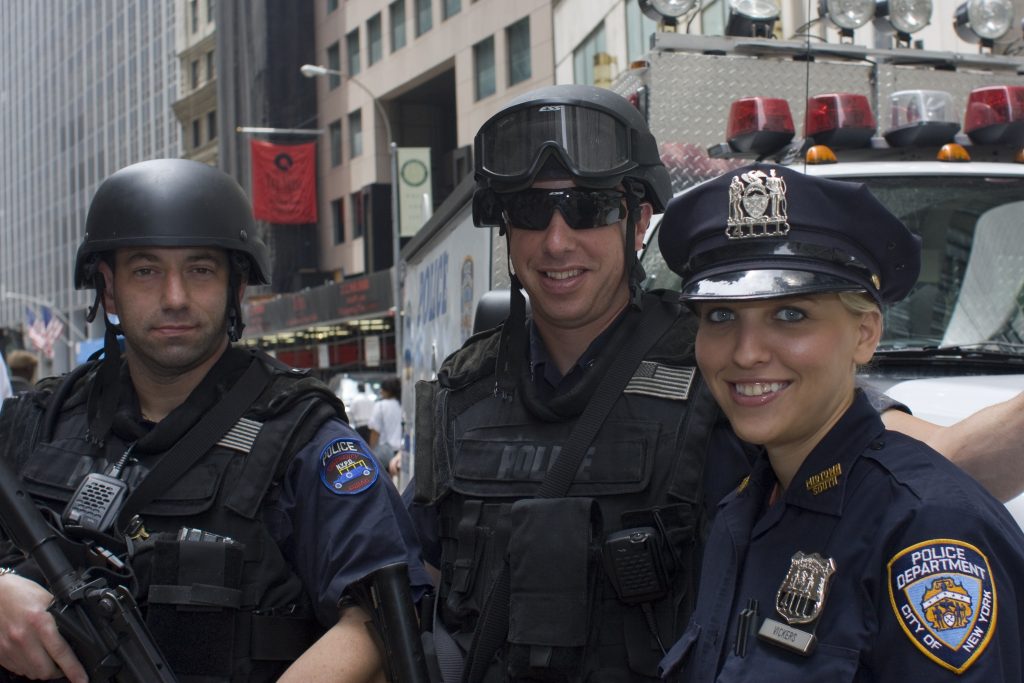
Image Credit: Nick.Allen, CC BY 2.0 via Wikimedia Commons
By Saul Roth
There are two types of psychosocial stress. There is acute stress that comes from an immediate event that only lasts for a short time. This would be what a police officer experiences when involved in any type of pursuit, such as responding lights and sirens or entering the home of a burglary in progress. Chronic stress builds in the person over time. The organizational stress discussed by Hasan and Wiecko (2007) depicts this kind of stress. Even though two different officers might experience the same stress, each will react differently. How the person perceives a stress or threat, their coping abilities, their personal attributes, and their support system will affect their reaction. Officers with high amounts of cynicism, pessimism, neuroticism, and perfectionism handle increased stress and tension better than new officers or officers that do not have these personalities. Hardiness was shown in an earlier study (Lennings, 1995) to help officers cope with stress. Officers will handle stress better if they are able to handle the situation at hand. Gathering all pertinent information and controlling the situation is a coping strategy. Those officers that cannot handle a situation will use avoidance a strategy instead of approaching the situation directly. This helps this type of officer get over one incident and move onto the next. Some of the other negative coping strategies used by officers include alcohol consumption, smoking cigarettes, and isolating themselves from co-workers and friends (Anderson et al., 2002).
There are also two ways that individuals tend to handle stress. There are actually those low in anxiety and then there are repressors. Repressors become anxious during high critical incidents, but do not report being anxious. This becomes more of a factor in a police environment where officers are taught to control emotions, control situations, show authority, and not display emotions. The prevalence of repressors within the police officer population makes it harder to obtain accurate information in police studies regarding stress, as such officers will not report how they actually feel (Anderson et al., 2002).
Anderson et al.’s (2002) study did not allow the repressors to hinder the study. The officers were monitored with heart rate monitors. Heart rate monitors were changed in the middle of the study so only 76 of the ride-alongs were used for data. The average resting heart rate for the officers in the study was 59 beats per minute. As the shift continued, the average resting rate increased to 82 beats per minute. The resting heart rates were highest at the beginning of the shift and lowest at the end. This shows there is some stress involved just in beginning an officer’s workday. Heart rates for officers having to put their hand on or near their weapon were as high as handcuffing a suspect. Furthermore, heart rate levels rose during high-speed responses to calls and pursuits. An interesting note was that officers responding to back-up officers had higher heart rates than the officers actually at the assignment. This demonstrates that anticipatory stress is as high or higher than the actual handling of the incident. After completion of assignments, heart rate level dropped, but did not get back to normal until 30 to 60 minutes after the assignment was completed. The highest heart rates were monitored when officers were struggling with a suspect, though rates were also high when officers interacted with any suspect. There were also times of unexpectedly high heart rates. For instance, an officer at a traffic stop’s heart rate rose when he went back to the police car to use the mobile data terminal. One officer who responded to suspicious package assignment experienced an increase in heart rate every time he had to explain the situation to another supervisor or specialist (Anderson et al., 2002)

Recent Comments